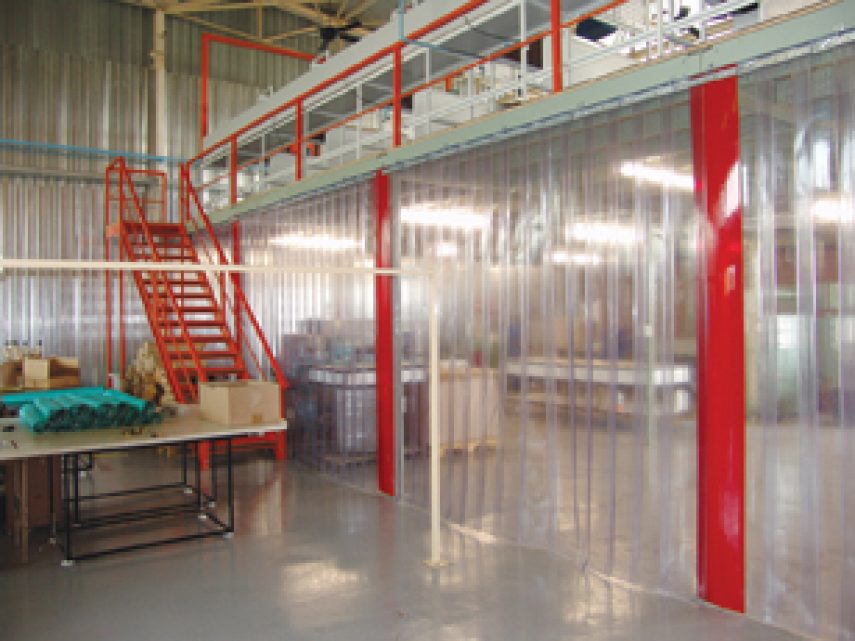THE quality, shelf life and saleability of consumables are dependent on several factors, including their freshness. Linked to this is the absence of pollutants and unsafe micro-organisms. Creating favourable environmental conditions with temporary climate control solutions helps keep products healthy and wholesome for as long as possible and promotes worker productivity.
Dangers associated with not using temporary climate control measures in food processing, packaging and storage facilities include the growth and spread of micro-organisms, even in areas considered clean, due to excessive moisture. A lack of proper airflow may allow contaminants and dust particles to reach food production areas.
According to Wim Dessing, sales executive at Apex Strip Curtains & Doors, there are several elements that assist in providing temporary climate control within food processing and other manufacturing facilities. These include HVAC systems, vacuum/exhaust systems and barrier control systems. The latter could include customised strip curtains, which allow facilities to create zones that reduce the influx of dust and other pollutants as well as minimise variations in humidity and temperature.
Dessing said the ideal would be to include barrier zones at the onset of building design, but that strip curtains can be readily incorporated into brownfields projects. The layout and design of the food processing or manufacturing facility should be adapted to the hygienic requirements of a given process, packaging or storage area. It should allow the flow of material, personnel, air and waste in the right direction.
Dust control is critical in a wide spectrum of industries from manufacturing to food packaging. Woodworking, painting, powdered ingredients/spice mixing and packaging, ceramic cutting/grinding, powdered chemical processing and packaging are just a few of the applications for which it is important.
At the nuisance level, particulate generated from cutting, grinding and mixing can settle on surfaces significant distances from the operation if containment equipment is not in place. In terms of product quality, uncontrolled particulate matter can spoil or degrade batches of critical materials, whether in chemical or food processing. In addition, there are many instances where high enough concentrations of airborne dust-sized particulate in a closed space can become explosive or flammable.
On a personnel level, airborne dust can be a health hazard to employees, ranging from skin, eye, or bronchial irritation to more serious issues for people with asthma. Most serious can be the potential for particulates to cause lung diseases like cancer.
Dessing said Apex General Purpose Strip Curtains are designed to mitigate dust and pollutant ingress and can significantly improve the effectiveness of vacuum/extraction systems while offering the opportunity for cost savings, both in the initial cost of the equipment and in direct operating cost.
He added that by minimising the area to be exhausted, smaller fans can be used, with less total air movement being required. Lower air velocity through filter media increases the effective particle separation of the device. Additionally, lower air flow through the filter reduces the frequency required for changeout or cleaning.
“In addition to reducing the volume of space to be exhausted, Apex General Purpose Strip Curtains act as a very effective physical barrier on their own, blocking transfer of dust particles from one area to another.”

